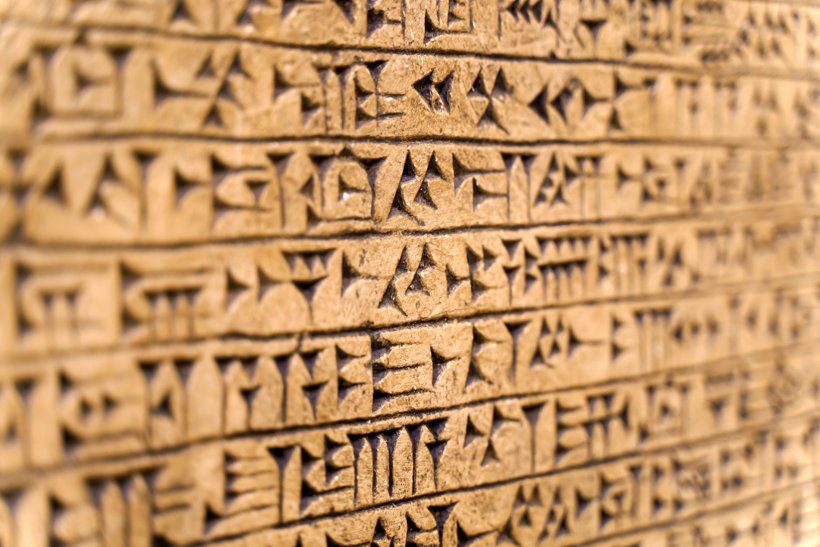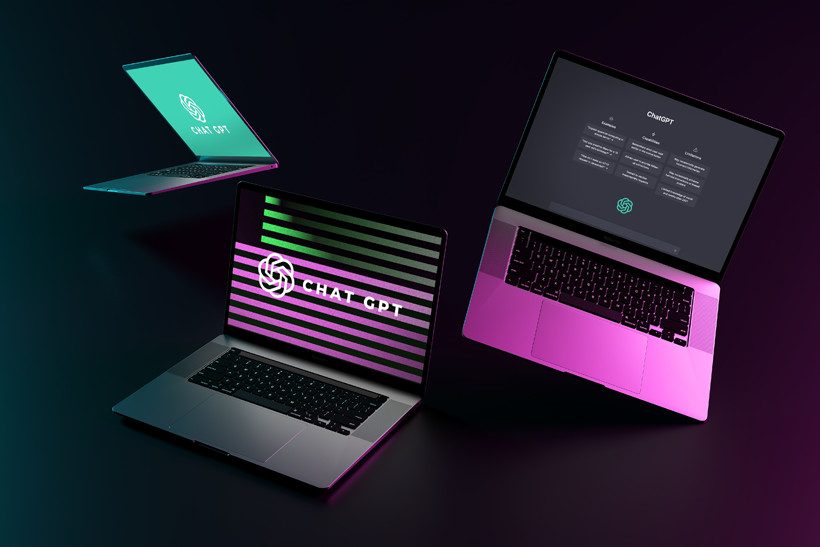All human relationships start with communication. Language barriers can cause misunderstandings and distrust, so translation is an important skill. Today, AI has found a place in the professional translation sector. Multilingual conversations are becoming more commonplace thanks to the internet, and our translation tools must keep up. This article explores how AI is changing the linguistics profession and what it means for the future.

Translation as an Ancient Craft
Some of the first translations appeared in the ancient civilizations of Mesopotamia, Egypt, and Rome. Scholars also translated religious texts as early as the third century AD, when the church named St Jerome the patron saint of translators. The craft enabled humans to pass on knowledge and stories from around the world for generations.
In the 1950s, universities began to recognize translation studies as an academic discipline, and the field expanded immensely for the rest of the century. The demand for professional translation services grew alongside industrialization and, later, the internet.
Machines Enter the Translation Industry
On a winter’s day in New York in 1954, onlookers watched in awe as an IBM/Georgetown University machine expertly translated Russian into English. It was the first public display of machine translation, and many believed it would revolutionize the industry within the next decade. While progress turned out to be much slower, this breakthrough paved the way for the translation AI we have today.
The first commercially available machine translation systems sprung up during the 1990s. The internet gave rise to translation tools like Systran and Yahoo Babelfish, and soon, cross-cultural understanding was just a click away.
The Evolution of Machine Translation (MT)
Although machine translation has been many years in the making, it still has limitations. The first technologies produced far from perfect results, and only recently have machines been able to imitate human language sufficiently. There are three types of machine translation in use today:
1. Rule-Based MT
The oldest form of machine translation uses grammatical rules to piece together sentences in the target language. Programmers designed rule-based systems using set words and phrases, limiting the subject matter they can translate. Most professional translation companies no longer use this outdated technology because it produces low-quality work unsuitable for most modern applications.
2. Statistical MT
A step up from RBMT, statistical machine translation uses probability to deduct translations for specific phrases. The system compares translated texts in the source and target languages, recognizing patterns in the translation. It then applies this knowledge to new translations. Although an improvement from the first MT technology, these systems have also largely been phased out.
3. Neural MT
NMT tackles translation using AI algorithms that can learn languages. This technology aims to imitate the human brain and can recognize and learn from patterns in linguistic data. Neural machine translation has become the industry standard as it produces reasonably accurate results. However, it is a far cry from professional translation. A famous example of NMT technology is Google Translate.

The Emergence of Large Language Models
The large language model is the most recent advancement in AI technology that may impact translation. An LLM uses massive datasets with thousands of parameters to process human language and generate unique responses. In November 2022, OpenAI launched a demo of its LLM bot, ChatGPT, which introduced the world to the wonders of generative AI.
Similar applications have followed; however, none can provide accurate translations. While casual users can experiment with the software, enterprises are wary of its capabilities, driving the demand for professional translation services that promise superior quality.
SaaS and the Translation Management System
The recent flurry of technological advancements has birthed new business models in the translation industry. Historically, companies would hire individual linguists to handle their language projects. Today, language service providers (LSPs) are an option. These enterprises manage much more than translation and often lean on technological tools, most notably translation management systems (TMSs).
A TMS automates the translation process to make it faster and helps LSPs increase their workload without more employees. It can also act as a portal that connects linguists and their clients, stores translation project data and runs billing and other background processes.
Various providers offer translation and AI-based TMSs as SaaS models. Businesses can lease the license to use the software instead of buying it outright, which keeps the translation price low. Lowering the industry price standards may pressure freelance linguists to do the same, potentially leading them to join established LSPs.
AI for Workflow Automation and Project Management
In the wake of the TMS, artificial intelligence has proven helpful for much more than translation. AI can also run all the background processes that go into producing high-quality translations for text and multimedia content. For example, it might collect metadata about your translation projects to pair future requests with the best linguists automatically, generate project timelines, etc.
Artificial intelligence learns constantly, and AI systems improve the more you use them. An AI-based TMS might assist with reporting, quality control, and future planning by analyzing the success rate of translations and presenting it as a graphic.
Linguists can use these tools to strengthen their offerings above and beyond basic translation services. Even if a translator works manually and collaborates with human editors and proofreaders, AI might still serve a purpose in helping them build better workflows.

Faster Translation: Pros and Cons
Speed is one of the most attractive selling points for AI translation. Machines can process text much faster than humans, allowing them to complete translation jobs on tighter deadlines. While this can be advantageous in some instances, it does have its drawbacks. It compromises accuracy, leading to more complex workflows that involve revisions and in-depth editing.
Setting an industry standard for lightning-fast translations may also disrupt human translators. Professional translation takes time and simply can’t compete with the speed of a machine translation engine. Additionally, working too fast leaves room for error and may negatively affect a linguist’s mental health.
A Newfound Emphasis on Translation Quality
With the low cost and high speed of AI translation, human translators must find a way to stand out. Quality has become a top priority for many LSPs and freelancers, especially when they use machines to aid their processes. The translation quality metrics below can help businesses estimate the accuracy of a machine translation system:
- BLEU -The Bilingual Evaluation Understudy system is the world’s most widely used machine translation quality metric. To check for similarities, BLEU compares machine-translated text to a human translation of the same content. The more phrases the two documents share, the higher the BLEU score.
- NIST – The US National Institute of Standards and Technology developed its own translation quality metric in the early 2000s. NIST is an adaptation of BLEU that provides a more detailed evaluation of the translation’s accuracy.
- TER – Translation Error Rate tracks how many edits it takes to make a machine translation match a human-translated reference word-for-word. A lower TER means the text requires less post-editing and is likely of higher quality.
BLEU, NIST, and TER are automated translation quality evaluation metrics run by machines. They provide an overview of an MT system’s performance, not a complete score. Hiring professional linguists to conduct a manual evaluation is the best way to assess translation quality.
Linguistic validation is fast becoming a highly sought-after service at professional translation agencies. This process refers to a quality control measure that requires human intervention. First, human linguists read through the source text carefully. Then, they compare it with the machine-generated translation to ensure accuracy. This process allows them to validate a machine’s work and comment on whether it preserved the author’s intended meaning.
Human-in-the-Loop Translation Systems
The best machine translation uses AI trained by experts. A human-in-the-loop (HITL) translation system consists of a human translator and a machine program. The translator reviews the machine’s work and provides feedback on its performance to help it improve in the future. Without this system, AI only ‘learns’ during development and may begin to produce inaccurate results when presented with unfamiliar input data.
HITL translation is ideal for highly specialized industries. Someday, human translators may move towards tech-centered roles that involve training artificial intelligence algorithms.

Hybrid Translation Models for Humans and AI
What humans lack in speed, AI lacks in quality. Combining both translation approaches can help fill in the gaps. Today, professional translators can use machines for basic translation, revisiting the script to make edits to the sentence structure and overall tone and message. In this way, AI acts as a co-pilot or assistant to professional linguists. It might also prove useful as a quality control device, helping translators run quick back translations to check their work.
Getting ahead of the AI curve can help linguists build tech-forward businesses more adaptable to change. Machines give translators more ways to work, expanding the professional translation industry and making room for innovations and new offerings.
What Does the Future Hold for the Translation Industry?
Translation is an ancient profession that will not die out any time soon. Many experts agree that machine translation, LLMs, and artificial intelligence are not barriers but facilitators of human communication. With proper management, these tools can make translation faster and lead to an industry-wide drive for higher-quality work.
Prismatic Translation® provides professional translation services in over 30 languages. Fill in the form below for an instant quote.